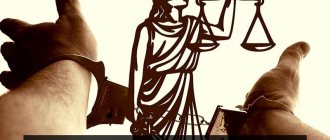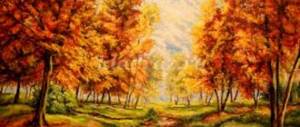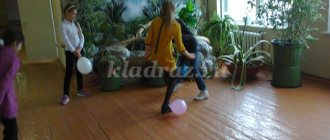“Take care of your life and health” class hour (7th grade) on the topic
"Take care of your life and health"
Goal: to form in children the idea that alcoholism is a disease; evoke in them sympathy, pity for the alcoholic, and a desire not to be like him.
Equipment: portrait of an alcoholic; black and white sheets with a portrait of an alcoholic for each child; illustrative material.
Progress of the lesson
I. Organizational moment.
II. Introductory conversation.
– Remember what diseases are, what diseases we know. (Bring children to the conclusion that alcoholism is also a disease; there are even special doctors who treat it.)
III. Main part.
Discussion of questions:
– attitude towards a person with alcoholism;
– how alcoholism affects a person’s appearance;
– can a person with alcoholism be a president, athlete, astronaut, movie star, fashion model;
– can a person with alcoholism drive a car, swim, ride a boat, etc.
Give children black and white sheets with a portrait of an alcoholic and invite them to color them.
External signs of a person in a state of alcohol
intoxication
The first thing that attracts attention is the clothing. Buttons may be undone and a scarf or tie may be hanging out. You can easily spot areas of clothing that are stained with something. The gait is uncertain, staggering. Arm movements are sweeping, especially when animated by conversation. The color of the skin of the face is very characteristic. On the one hand (with alcohol or hashish intoxication), the face becomes bright red, purple. The shine of the eyes is pronounced, the pupils are dilated. With other types of intoxication, the complexion may be pale, with an earthy tint, and the eyes may be dull and sunken. An intoxicated person alone is always bored. Characteristic attempts to talk about something, to communicate. Speech is incoherent, slurred, often an intoxicated person interrupts others, tries to impose his own judgments. He practically does not take criticism, reacts negatively to comments, likes to involve him in controversial topics, and often pesters people in transport and in queues. Even a seemingly “quiet”, intoxicated person is dangerous, since an accidental reaction can result in a violent aggressive reaction with significant and dangerous use of physical force. The most common types of offenses caused by drunkenness are domestic conflicts and fires caused by unextinguished cigarette butts.
Recommendations for a child who finds himself in the same room with an intoxicated person:
- do not respond to proposed conversations, arguments, do not participate in games with the intoxicated person, and, in order not to offend him with a refusal, move away without explaining anything, leave, and even if danger is felt, run away;
– you cannot sit next to him on public transport;
– under no circumstances should you get into a car if there is a suspicion that the driver is not himself due to something (even if it is someone you know).
Conclusions:
– People don’t have bad habits: smoking, drinking vodka, taking drugs, all this is a disease.
– In life, it often happens like this: after smoking one single cigarette or even taking a “puff” of tobacco smoke, people unnoticeably become involved in smoking. This is tobaccoism.
– Similarly, from the first glass of vodka you can become an alcoholic for life, of course, not immediately, but “from glass to glass.”
– Some people need 20 years to become an alcoholic, others – 5 years, and for some, 2 months are enough. Therefore, it is better not to take risks and not try.
IV. Summary of the lesson.
– Do you want to get sick (including alcoholism)?
Draw a poster on the topic “How do you feel about a person who constantly drinks alcohol.”
Class hour on traffic rules “Take care of your life! (hazards on the roads)"
10. At what age can I get a license to drive a motorcycle? (At 16 years old.)
11.Which edge of the road should pedestrians walk in places where there is no sidewalk? (On the left, towards moving traffic.)
12.What is a railway crossing? (The intersection of the railway and the road.)
13.Can children sit in the front seat of a car? (You can, if you reach 12 years of age.)
14. Is a moped driver allowed to drive on footpaths? (not allowed).
15. Who do we call “road users”? (pedestrians, drivers, passengers). 16. Is it possible for a cyclist to ride on the road if there is a bike path nearby? (No).
17. What road sign is installed near schools? (children).
18. Which turn is more dangerous: left or right? (left, since traffic is on the right).
19. What is the name of a zebra crossing on the road? (crosswalk).
20. Are persons performing work on the road pedestrians? (No).
21. What signals does the traffic light give? (red, yellow, green).
22. Which intersection is called controlled? (the one where there is a traffic light or traffic controller).
23. Who should pedestrians and drivers obey if both a traffic light and a traffic controller are working at the intersection? (to the traffic controller).
24. Why are brake lights needed on a car? (so that other road users can see the driver's intentions to stop or slow down).
25. Which side should you stay on when walking along the sidewalk? (right side).
26. Do passengers always need to wear seat belts? (yes, always).
27. How should a cyclist inform other road users of his intention to stop? (raise your hand up).
28. How should you cross the road if you got off the bus? (you cannot bypass vehicles either in front or behind, you need to wait until they leave and the road will be visible in both directions, but it is better to move to a safe distance, and if there is a pedestrian crossing, then you should cross the road along it).
29. Is it possible to cross the road diagonally? (no, because, firstly, the path becomes longer, and secondly, it is more difficult to see the transport that moves from the back).
30. Which position of the traffic controller prohibits the movement of all road users? (hand raised up).
2.Captains competition
Questions:
1. What special traffic lights do you know? (Railway, two-color (red and green), pedestrian traffic lights, cyclist traffic lights, directional traffic lights.)
2. What should a pedestrian do if he did not have time to complete the transition to the traffic light? (Go to the middle of the roadway and stay there, continue driving only when the traffic light turns green.)




